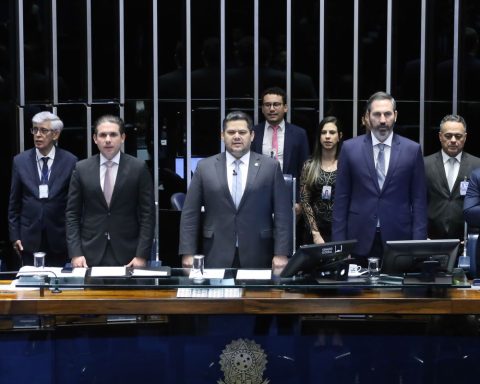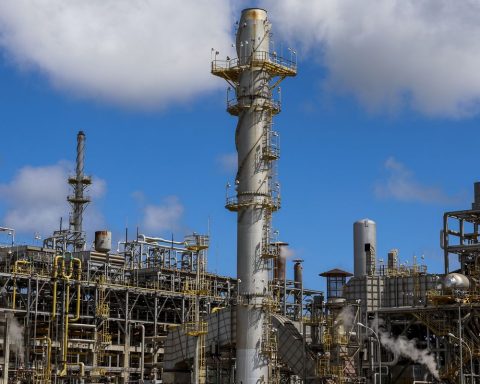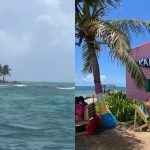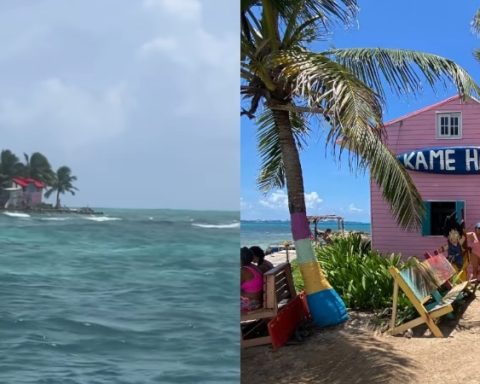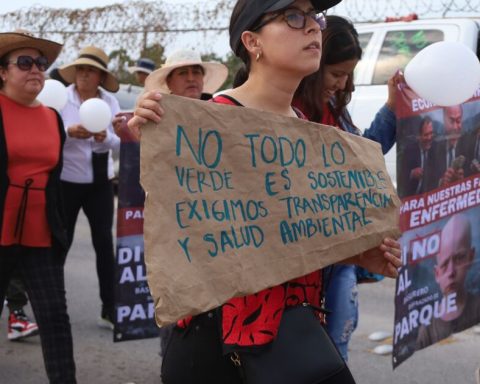The Brazilian Institute for the Environment and Renewable Natural Resources (Ibama) asked the Brazilian Navy for information on the possible sinking of the aircraft carrier São Paulo on the high seas. The request was made yesterday (2) after the Naval Force officially announced the decision to carry out a controlled sinking of the vessel. The objective is to study alternatives to reduce and safeguard impacts on the environment.
According to the institute, the Navy’s decision goes against the measures pointed out by its technical staff to ensure the environmentally appropriate disposal provided for in the regulations on international transport of waste (Basel Convention), since, in the hull of the aircraft carrier, there is the presence of asbestos residues.
A Naval Force justified the sinking due to damage to the vessel’s hull that would compromise navigation safety and cause damage to logistics, the economy and even the environment.
“In addition to requesting studies from the Navy’s Hydrographic Center, bottom mapping of the area selected for jettisoning the hull and information on the intended method of causing the sinking, Ibama recommended the preparation of a Water Monitoring Plan”, said the institute. .
A technical note drawn up three weeks ago by employees of Ibama’s technical staff indicated possible environmental impacts resulting from the eventual sinking of the vessel. The document points out that the release of polluting materials contained in the structure could disturb the filtering capacity and hinder the growth of aquatic organisms; the physical impact on the ocean floor would cause the death of species and deterioration of ecosystems.
Note from IBAMA
The note from Ibama also says that the release of Chlorofluorocarbons (CFCs) and Hydrochlorofluorocarbons (HCFCs) would contribute to the degradation of the ozone layer from the corrosion of the vessel walls and that the ship’s shell also has the potential to attract harmful invasive species for native biodiversity.
Another point observed is that “the microplastics and heavy metals present in the vessel’s paints could become protagonists of undesirable bioaccumulation in aquatic organisms. As an aggravating factor, all predicted impacts could occur in hotspots (reserve) of biodiversity, fundamental for marine life.”
Ibama said that there are accredited shipyards to carry out “safe and environmentally adequate recycling”, or green recycling, in countries such as Italy, Norway, Denmark and Turkey. This type of recycling is determined by Resolution of the International Maritime Organization of the United Nations (UN). The norm establishes that old ships must have a final, unique and exclusive destination, for safe and environmentally appropriate recycling.
“As long as Brazil does not have facilities with this profile, there will be a need to export ex-ships to countries with adequate infrastructure, in accordance with the Basel Convention”, said the institute.
The ship’s hull was sold by the Brazilian Navy to a Turkish company – SÖK Denizcilik (SÖK), in 2021. The aircraft carrier would then be towed to a shipyard in Turkey for green recycling. The aircraft carrier returned to Brazil because the country canceled the authorization it had issued for export at the end of July 2022.
“Twenty-two days after transit began, the Turkish environmental authority unilaterally withdrew consent to import and dismantle the hull in that country. All that was left for Ibama was to suspend the export authorization and determine the immediate return of the hull to Brazil, in accordance with the precepts set out in the Basel Convention”, said a note released by the Ministry of Defense, the Advocacy-General of the Union (AGU) and the Navy. from Brazil.
According to the joint note, given the situation, with the return of the hull to Brazil, the Brazilian Maritime Authority (AMB) presented “requirements to guarantee the safety of navigation and the prevention of environmental pollution in the sea and inland waters”.
Brazilian Maritime
The owner SÖK was determined “the permanence of the hull in a maritime holding area outside the Territorial Sea, at a distance greater than 22 kilometers (km) from the coast; and carrying out a survey on the hull”.
According to the Brazilian Navy, it is not up to the AMB to interfere in actions of a private nature that involve the selection of shipyards to conduct repairs or negotiate with port terminals.
“However, with a view to proceeding with re-export for an environmentally sustainable dismantling, AMB presented the company SÖK with a list of shipyards in Brazil with the technical capacity to carry out repairs to the hull”, he informed.
“Faced with the inertia of the owner to comply with the determinations presented by the AMB” and the “imminent possibility of abandoning the hull at sea”, the AMB carried out a new expert inspection of the hull, “in which a severe degradation of the buoyancy conditions and stability”.
The company did not renew the insurance, nor did it present a docking and repair contract for the execution of the necessary services. “In view of the above, the Brazilian State had no alternative but to consider the property as lost, and to assume administrative control of the hull, in order to avoid damage to the environment and preserve navigation safety”, informed the joint note of the Brazilian authorities.
Thus, it was decided that the aircraft carrier would be towed in a remote maritime area, but within Brazilian jurisdictional waters, located 350 km from the coast and with a depth of approximately 5,000 meters.
“In view of the facts presented and the increasing risk involved in towing, due to the deterioration of the hull’s buoyancy conditions and the inevitability of spontaneous/uncontrolled sinking, it is not possible to adopt any other course of action other than jettisoning the hull, for means of the planned and controlled sinking”, concluded the note.


